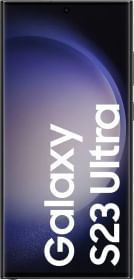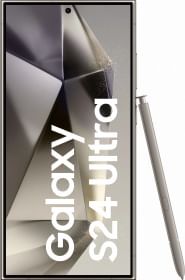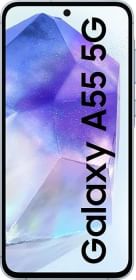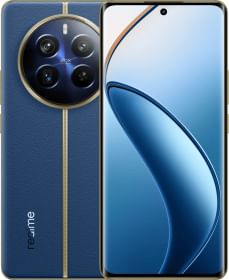High refresh rate displays have taken on and it’s no surprise that manufacturers are responding to consumer demand with 90Hz, 120Hz, and even 144Hz panels with full HD and 2K resolution.
These displays can, however, be excessively harsh on batteries and that’s where the difference between a high refresh rate and a variable refresh rate (VRR) screen comes in.
Screens with a variable refresh rate can slow down refreshing themselves based on the content being displayed and thus conserve battery. For instance, if you are viewing a static picture or are sifting through images in your gallery app, there is no reason for the display to keep refreshing 90 times or 120 times every second; instead, a 1 fps or 15fps refresh would do just fine.
The variable refresh rate has been a staple gaming monitor feature for ages but there are several limitations when implementing the same concept on smartphones.
True variable refresh rate limitations on phones
Let’s talk about some issues with VRR implementation on smartphones. To start with, Most Android-based user interfaces target just 60Hz. Also, DDICs (Display driver ICs) currently in use for smartphone displays reportedly doesn’t support variable refresh rates.
The variable refresh rate on modern phones is basically mode switching – the phone senses the screen content and switches to a specific refresh rate mode. This implies that a phone may be able to run at 48 Hz or at 60Hz but not at any in-between frequency like 55Hz or 58Hz.
Most high refresh rate phones that we have today switch between 60hz, 90hz, 120hz, and 144hz modes.
It’s only recently that we have had Android phones that can go lower below 60 Hz and these are being marketed as VRR phones that help conserve battery.
ALSO READ: Best 90Hz and 120Hz display phones
Do phones really have true variable Refresh rate or dynamic refresh rate? No.
On the Android side of things, Samsung and Xiaomi are brands that market technology similar to VRR and we assume several other manufacturers should follow similar implementation going forward.
Samsung Galaxy Note20 Ultra was the first phone to include a ‘dynamic variable refresh rate’. It does so by using HOP (Hybrid Oxide and Polycrystalline silicon) display panel that has faster switching transistors in the display backplane and also by using display driver-level optimizations.
As AnandTech discovered, the Galaxy Note20 Ultra switches from true variable refresh rate to mode-switching VRR based on variables like ambient light, set display brightness, and content brightness.
Even the True VRR on Samsung Galaxy Note 20 Ultra is still not seamless but switching between preset modes – there are more gradations or subsets under different modes. For instance, in the 60Hz mode, the Galaxy Note20 Ultra can switch between 1Hz, 10hz, 24hz, 30hz, 40hz, and 60hz.
Xiaomi’s AdaptiveSync variable display implementation is even rawer. The IPS LCD displays on Xiaomi and Poco phones simply switch between 6 or 7 presets – 144Hz, 120Hz, 90Hz, 60Hz, 50Hz, 48Hz, and 30Hz. The company, however, claims a similar reduction in battery drain and that’s perhaps what matters.
That’s also how Apple implemented VRR on iPad Pros and Macbook Pros in 2016 where the screen could dial down to a constant 30Hz from standard 60Hz for static content and this helped conserve battery.
Such implementations that support refreshes below 60Hz help conserve some battery and we will consider such phones under True Variable Refresh Rate or Dynamic Refresh Rate phone because they are being marketed as such.
It must be noted that none of these implementations fall under Seamless VRR as on gaming monitors.
List of phones with VRR or dynamic refresh rate displays
Here are a few phones that support VRR displays. The list is pretty limited as of today and we will add more options as they surface.
1. Samsung Galaxy S21 Ultra

Samsung Galaxy S21 Ultra (review) is the first Samsung phone to support a 120Hz dynamic refresh rate at a full 2K resolution. The Galaxy S21+ and Galaxy S21 also get variable refresh rates, but it isn’t dynamic and switching takes place in fewer present modes (48Hz, 60Hz, 96Hz, 120Hz).
The technology used is similar to what we had on the Galaxy Note 20 Ultra. Samsung has improved the AF mechanism on the Galaxy S21 series and has also improved its chipset.
You can also check out Galaxy Note 20 Ultra.
2. Apple iPhone 13 Pro Max
iPhone 13 Pro Max sports a 6.7 inch 120Hz ProMotion display which is a fancy way of saying this handset has got an adaptive refresh rate between 10Hz and 120Hz. Now, 120Hz works on the iOS system interface, stock apps, and while you scroll content in 3rd party apps. Having said that the support for games and in-app motions and interactions would hit 120Hz only when the developer updates them. Most devs should be already on it.
Apple has also increased the peak brightness to 1200 nits; the resolution is 1284 x 2778 pixels, there is support for HDR10, Dolby Vision, and true tone wide color coverage. The protection on top is scratch-resistant ceramic glass. Other highlights include the A15 Bionic chipset, iOS 15, improved camera optics, and features.
3. Samsung Galaxy Z Fold 3

Samsung recently announced its latest foldable devices – the Galaxy Z Fold 3 5G and Galaxy Z Flip 3 5G in India. Both these phones come with Samsung’s Dynamic AMOLED displays which not just fold but also manage to deliver a 120Hz refresh rate.
This display called Infinity Flex Display folds in half and you get a 6.2-inch screen on the surface. That cover panel is plenty big to use as a regular phone. Turn on the screen, you would be greeted by the OneUI 3.1 based on Android 11 with tailored software tweaks.
The Galaxy Z Fold 3 5G ships with Qualcomm Snapdragon 888 SoC paired with 12GB of LPDDR5 RAM and 512GB of UFS 3.1 storage whereas the Galaxy Z Flip 3 5G comes with the same processor but only 8GB RAM and 256GB of storage.
4. OnePlus 9 Pro

To justify its leap to a truly premium price segment, OnePlus has worked on improving the display of its phones. OnePlus 9 Pro has curved AMOLED screens with high-refresh-rate. It has a 6.7-inch QHD+ AMOLED panel with a 120Hz adaptive refresh rate and HDR10+ picture quality.
It is powered by Snapdragon 888 octa-core chipset paired with LPDDR5 RAM and UFS 3.1 storage. It is kept alive by a 4,500mAh battery with 65W wired charging support. There is also wireless charging, and IP68 dust and water resistance rating.
ALSO READ: Best Phones With Curved Edge Display
5. Google Pixel 6 Pro

Off the two Pixels, the 6 Pro has got a curved screen. This is a trend wherein brands tend to use waterfall displays on their top-end model, perhaps because it appears more premium than flat. Anyhoo, this is a 6.7-inch OLED screen with a QHD+ resolution, 512ppi, 120Hz LTPO adaptive refresh rate (10Hz to 120Hz), HDR support, and Gorilla Glass Victus shield on top.
Under the hood, there is Google’s in-house Tensor SoC with LPDDR5 RAM and UFS 3.1 storage, and a 5004mAh battery. The software is Android 12, btw.
6. Xiaomi Mi 11 Ultra

Xiaomi’s flagship phone for the year also sports a curved edge screen that measures 6.81-inches diagonally. It is an AMOLED display in nature with a resolution of 3200×1440 pixels, a variable refresh rate of up to 120Hz, and a peak brightness of 1700 nits. Now the refresh rate can vary between 30Hz and 120Hz, although if the content on the screen is 30Hz/60Hz, then the screen will stick to the 60Hz limit. This is to save power.
The Mi 11 Ultra 5G also comes with a Snapdragon 888 chipset which is coupled with LPDDR5 RAM, UFS 3.1 storage, a 50MP rear camera setup, and a 5000mAh battery in the mix.
7. Asus ROG Phone 5

Asus ROG Phone 5 is one of the few phones with a 144Hz AMOLED display in the country. Now, when the refresh rate is set to Auto within Display Settings, the panel will switch between 60Hz, 120Hz, and 144Hz. Rest, it’s a 6.78-inch Full HD+ AMOLED panel that’s protected by Gorilla Glass 6. It sports an optical under-display fingerprint scanner, DCI-P3 color scale, HDR10, and SDR to HDR upscaling.
Under the hood, it has got the Snapdragon 888 chipset backed by up to 16GB LPDDR5 RAM and 512GB of UFS 3.1 storage. The phone is powered by a beefy 6000mAh battery with 65W fast charging support.
8. Vivo X70 Pro+
The X70 Pro+ 5G is one of the most exciting phones launched in 2021 in India and yes it has curved edges on both sides. The Vivo X70 Pro+ 5G (review) comes with a 6.78-inch AMOLED screen with curved edges that look really mesmerizing from every angle. It is of 1440 x 3200-pixel resolution and is capable of an adaptive refresh rate of up to 120Hz. The Samsung E5 LTPO AMOLED panel can dynamically switch back and forth between 1 to 120 hertz. Vivo also uses an “all-new fluorite AG coating” to ensure a smooth surface that is smudge-free.
The 5G phone’s other highlights are its Gimbal rear camera system, Snapdragon 888+, 4500mAh battery, and a 55W fast charging support.
9. iQOO 8 Pro

iQOO 8 Pro sports a large 6.78-inch 2K Samsung E5 AMOLED display with a 120Hz adaptive refresh rate, 20:9 aspect ratio, 92.2 percent screen-to-body ratio, 517 PPI, HDR10+, Dolby Vision, 1.07 billion colors, and DCI-P3 color gamut. The ARR will be between 1Hz and 120Hz depending on the on-screen content.
The phone is equipped with the Qualcomm Snapdragon 888 Plus SoC, 12GB LPDDR5 RAM, and 512GB of UFS 3.1 storage. It runs on a 4,500mAh battery with 120W fast charging, 50W fast wireless charging, and 10W reverse wireless charging.
10. Realme GT Neo 2

Realme GT Neo 2 5G has got a 6.62-inch E4 AMOLED screen with a dynamic refresh rate of up to 120Hz (60-120Hz) and 600Hz touch sampling rate. The panel is FHD+ resolution as well comes with 100% DCI-P3 color coverage, HDR10+ capability, and 1300nits peak brightness.
The bezels surrounding the screen have been kept to the minimum endowing a 85.7% screen-to-body ratio. The left cornered punch-hole cutout also is unobtrusive. Rest, here under the display, you get a fingerprint reader and Corning Gorilla Glass 5 protection on top.
The Realme GT Neo 2 comes powered by Snapdragon 888 chipset coupled with 12GB LPDDR4x RAM and 256GB UFS 3.1 internal storage. It is packed with a 5000mAh battery with a 65W SuperDart charge. Other prominent feature of the GT 5G includes a 64MP sensor led triple-rear camera, 16MP selfie camera, and 5G connectivity support.
11.Oppo Find X3 Pro
Find X3 Pro’s OLED display has a neat trick up its sleeve. It is capable of presenting more than a billion colors out of the photos taken using the on-device camera. This is far ahead of the 16.7 million colors you’d see on a contemporary display. As for the display specs, it is 6.7-inches in size, has Quad HD+ resolution, VRR up to 120Hz, up to 1300nits peak brightness, HDR 10+ standard, 100% DCI-P3, and Gorilla Glass 5 protection. Now that screen refresh rate can switch between 1Hz and 120Hz dynamically. It will be in the lower end whence the device is in idle mode.
Other things in its repertoire are Snapdragon 888, 4500mAh with 65W SuperVOOC 2.0 flash charge, LPDDR5 RAM and UFS 3.1, and a 50MP rear camera setup.



































